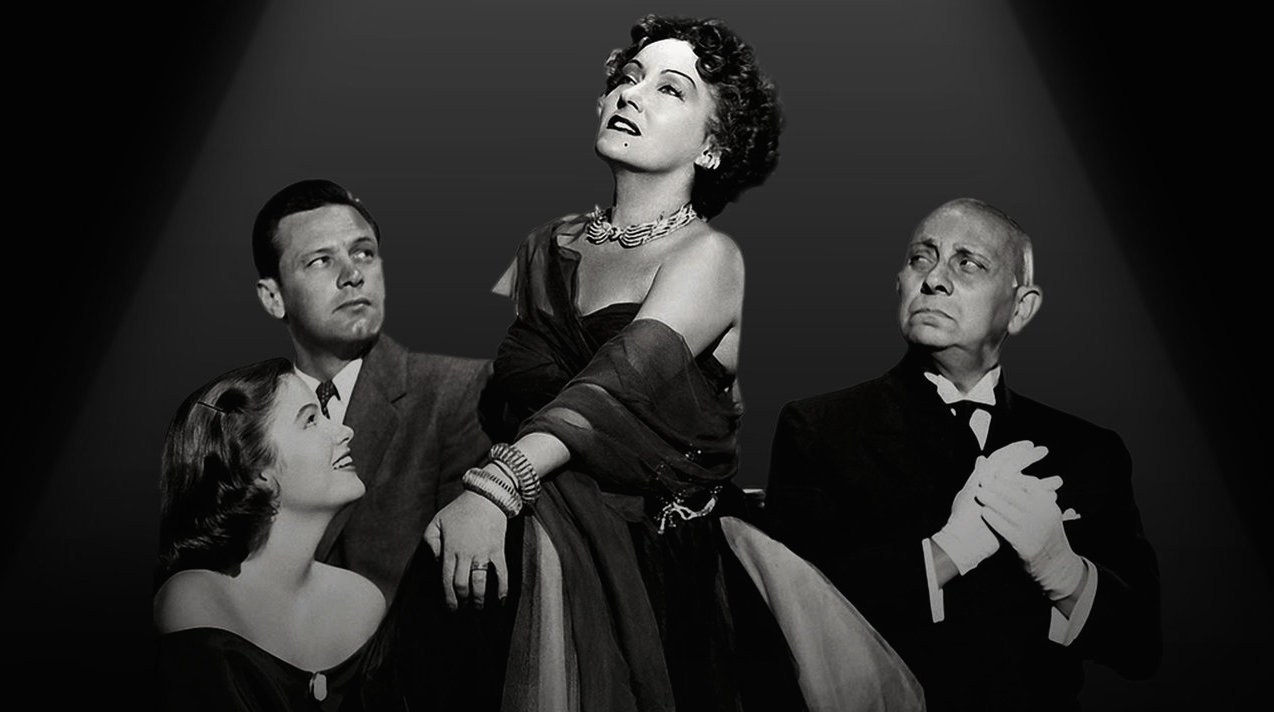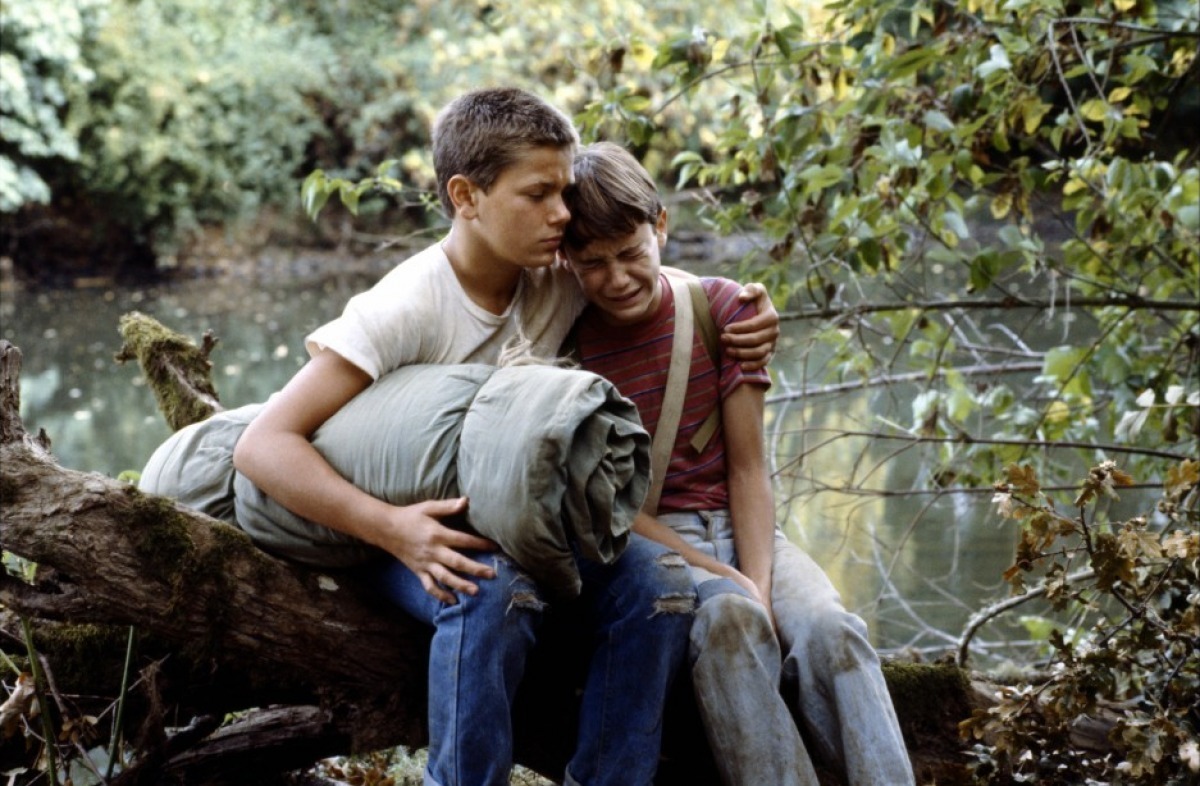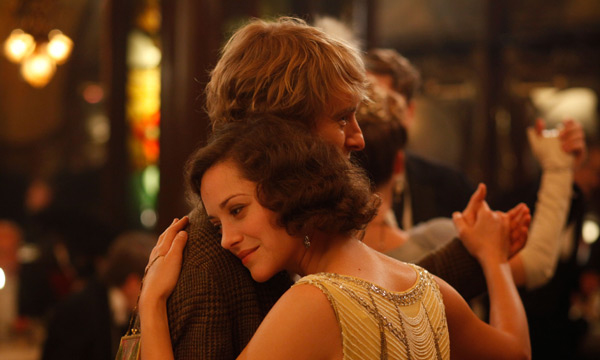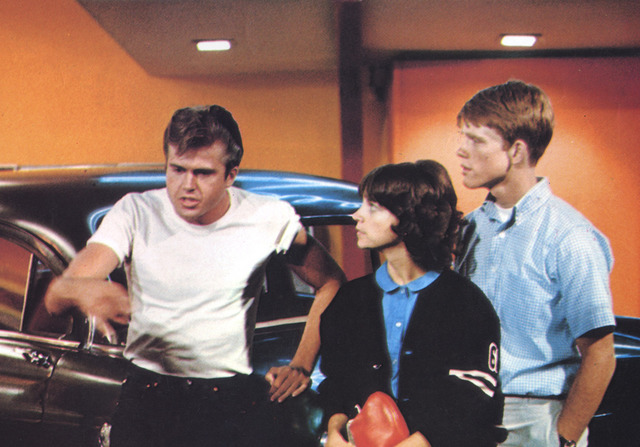5. Sunset Boulevard

May the good times roll… but sometimes those good times have to die. This doesn’t mean that the times will be necessarily bad, but things might never be as good as they were before. We all need to evolve, enter the next stage of our lives. That was always the deal: the good times will die, so you gotta make the best of the time you have left. But some people just can’t accept this. And the times can get very bad indeed…
If there is one place on this earth where the human animal seems incapable of accepting the fact that ‘the times are-a-changin,’ it’s in the heart of Los Angeles, California: a place commonly known as Hollywood.
Plastic surgeons thrive on the desperation of movie stars who want to rid themselves of every aging scar. Now with the continuous advent of CGI, aging movie stars can now use digital technology to look younger on screen. It’s a brave new world for those who refuse to grow old.
“Sunset Boulevard,” apart from being a scathing indictment on Hollywood culture, is also a warning against unhealthy nostalgia. It takes place in an interesting time in Hollywood history, a time where silent film stars could still remember the good old days. This is the case of Norma Desmond (Gloria Swanson), a silent era movie star rejected by the new kind of film known then as ‘talkies.’
Norma can’t bring herself to accept the terrifying present and constantly lives in the past. Her loyal butler Max (Erich von Stroheim) dedicates his life in feeding her the illusion of stardom.
In a way, Max doesn’t just do it to keep her sane, but to keep her from certain death, as she is prone to suicidal tendencies. But when a struggling young screenwriter named Joe (William Holden) comes into her life, the illusion slowly starts to shatter and that comes with predictable deadly consequences…
Billy Wilder has made numerous classics in his career and it’s hard to say whether “Sunset Boulevard” is his best one, but it might be. It is mercilessly funny, painfully tragic, and brutally honest about the darker side of Hollywood. Robert Altman’s “The Player” might be the second best Hollywood satire, but it’s hard to beat the original – and it’s unbelievable how much Wilder got away with, considering the era when it was made.
4. Stand by Me

Then suddenly you see a face from the past, a face you hadn’t seen or thought about in years. You are brought back to a different time, to a different life… it brings things into perspective, even if it doesn’t really change anything.
This is what happens to middle-aged Gordie Lachance (Richard Dreyfuss), as the films opens with him sitting in his car, parked on the side of the street, deep in thought as he looks down on a newspaper headline.
The headline is about an attorney named Chris Chambers who has been fatally stabbed in a restaurant. We can gather that this news has stunned him, made him park his car so he could collect his thoughts. Then begins his narration: “I was 12 going on 13 the first time I saw a dead human being…”
In the summer of 1959, Gordie (now played by Will Wheaton) lives in the small town of Castle Rock in the state of Maine – a place I wouldn’t recommend since throughout its existence, it has been plagued by various ghouls, such as serial killers, dogs with a serious case of rabies, and demons (according to the state’s historian Stephen King).
After the death of Gordie’s big brother (John Cusack), his parents have become painfully distant toward him, and this neglect has made him feel unwanted at home. Gordie hangs out with three other kids who are all outcasts in their own particular way: Vern (Jerry O’Connell) is neurotic and overweight; Chris (the late great River Phoenix) is distrusted by nearly everyone in town because of his criminal parents; and Teddy (Corey Feldman), due to his father being a traumatized veteran and an abusive alcoholic.
When Vern overhears his delinquent brother talking to his friend about discovering the body of a local missing kid named Ray Brower – information they can’t share with the authorities as they were stealing a car at the time – and shares this with the group, all of them become excited about the prospect of seeing a dead body as well as capitalizing on the fame of being the ones who found the body. But their journey will become much more meaningful than that and by the end, they will never be the same again.
The kids in this film swear, smoke and deal with things they shouldn’t at their age. So goes real life. But the bond feels real. The kids feel real. They can be filled with wide-eyed innocence but at the cusp of their adolescence, they can also be real brats.
The film never becomes overly depressing as director Rob Reiner makes sure it’s filled with laugh-out-loud humor that comes most often through their banter. The sadness isn’t so much the inner turmoil of these kids as it is the inevitability of the future. You know these kids will eventually lose touch. You know they won’t be friends forever. Their adventure should have united them forever, but that’s not just how it works.
But it was nice to have these people stand by you, if only for that short passage of time. You’ll never have friends like that again – Jesus, does anyone?
3. Midnight in Paris

“Midnight in Paris” is a film that works best for those who share the main character’s nostalgia for 1920’s Paris and the writers and artists who came from this lost generation.
If you’re not familiar with names like Gertrude Stein, Ernest Hemingway or F. Scott Fitzgerald (and his suffering wife Zelda), this film will be lost on you. But if those names excite you and instantly bring about romanticized images in your head, then “Midnight in Paris” is the perfect film for you. It also helps if you’re a fan of Woody Allen’s films.
Gil Pender (Owen Wilson) is a Hollywood screenwriter who dreams about writing something meaningful to himself. He has been working on a novel for some time about a man working in a nostalgia shop. He’s engaged to socialite Inez (Rachel McAdams), with whom he has little in common for and who urges him to let go of his literary ambitions.
The two of them go on vacation to Paris, alongside Inez’s parents (Kurt Fuller and Mimi Kennedy) who share their daughter’s elitism and probably passed it on to her. When Gil gets drunk one night and wanders into the heart of Paris around midnight, he stumbles upon a group of partygoers dressed in 1920’s clothing, who urge him to get inside their car.
When they get to the party, Gil discovers he’s not in the same age anymore – he’s in the roaring 20s where he’s meeting figures like F. Scott and Zelda Fitzgerald. This a dream come true for Gil and every midnight, he returns to this era where he can meet more of his icons. These experiences eventually gets him closer to fulfilling his dream of finishing his novel and even makes him fall in love with Adriana, a woman he is far more compatible with.
Literary buffs and art historians will enjoy the many knowing references. There’s apparently a surprising amount of historical accuracy in the film, though much is romanticized. There’s awareness of the folly of nostalgia, as one’s idealized time period may be darker than you had imagined. But it’s obvious that Allen is in love with both Paris and the 1920s, so the film never gets bogged down in bitterness. Allen has far too much fun playing around with its neat concept.
2. American Graffiti

Boy, times have really changed and I’m not just talking about the music. Despite the overall innocuous nature of “American Graffiti,” you know that millennials nowadays would find something to be deeply offended by when watching this film.
Just the the fact that the film is composed of only white people and doesn’t address the deeply problematic racism of its time – despite it not being the subject of the film – is enough for them to outright reject this film. The Oscar-winning “Three Billboards Over Ebbing, Missouri” has received dumbfounding controversy because it dared to make a racist cop look like a human being and not an outright monster.
Of course, the outrage machine is very inconsistent so maybe “American Graffiti,” if made today, would get a pass. But you just need one person on Twitter complaining about how this film doesn’t tackle the racism/sexism of its day and doesn’t have a diverse enough cast and all hell will be raised.
Let’s make no mistake about it: things are undoubtedly a lot better these days. But that doesn’t mean there wasn’t something special about the style of 1950’s Americana. There’s a reason why you still have so many 50’s/60’s diners.
The appeal isn’t the racism or sexism (for most people anyhow) but the style; the music, the clothing, the beautiful silliness that was considered hip in those days. The lousy but oh-so-cool American cars. The ridiculous dancing. The hairstyles. Women going batshit crazy when Elvis swung his hips. Women in dresses. Men in tucked-in shirts.
Before the beat poets and the hippies would change everything, before Kent State, before the horrifying pictures from Vietnam, before Watergate, before the growing distrust against American institutions, the American dream was still alive. Not everything was part of some big corporate conglomerate. Therapy was only for crazy people.
People mended their suffering in silence, through prescription that have now long been outlawed. The wife always had your dinner ready when you came home. The men didn’t complain so much – they were the strong, silent type like Gary Cooper! People were still riding the high of the promise of World War II. The future seemed bright and the streets would be filled with hovercrafts and the sky with flying cars.
And now all of this is gone. And we are all the better for it.
But when you’re young, like the main characters of “American Graffiti,” on the cusp of adolescence, on the verge of making choices that will change the course of their lives, other things matter. Steve (Ron Howard) ponders his sexual freedom the night before he goes to college – even though he is still in love with his high school sweetheart, Laurie (Cindy Williams).
Curt (Richard Dreyfuss) had made plans to leave alongside Steve, but is getting second thoughts. Terry (Charles Martin Smith) just wants to have fun and get laid. Meanwhile, John (Paul Le Mat), the town’s popular drag racer, is forced to babysit a whiny freshman girl (Mackenzie Phillips). All of this culminates in wacky adventures and the eventual touching ending.
The period is beautifully recreated as the memories were still fresh. The film was made during the 1970s, a period of American cinema that was full of pessimism. The studios didn’t have much faith in the film, but it became a surprising success – probably because it was a breath of fresh air at the time.
Directed by George Lucas – a man who needs no introduction – “American Graffiti” joined the prestiges National Film Registry because of its cultural, historical and aesthetic significances.
Even though Lucas will always be remembered for changing the modern blockbuster and for giving us the madness that is “Star Wars,” I find “American Graffiti” to be much more enjoyable and interesting. It might not have lightsabers, but it does have that hilarious scene where the underaged Terry tries to buy some booze without an ID – which was hilariously parodied in the season 7 episode of “The Simpsons,” “Summer of 4 ft. 2.”
1. Youth

In one of the many beautiful scenes of Paolo Sorrentino’s masterful “Youth,” Mick Boyle (Harvey Keitel) is instructing his minions of screenwriters on the different perception of youth and old age. Standing atop a balcony of a luscious hotel in the Swiss Alps, Mick asks one of the screenwriters to look through panoramic binoculars. The screenwriter sees a mountain and from the binoculars perspective, it seems to be nearby.
“This is what you see when you’re young,” Mick says. “Everything seems really close. That’s the future.”
He turns around her binoculars and now, from her perspective, everything seems far away. “That’s what you see when you’re old,” Mick says, “Everything seems really far away. That’s the past.”
The central characters of “Youth” are both living in the past while confronting the darkness of the future. Renowned composer Fred Ballinger (Michael Caine) is depressed because he lost his musical and romantic partner. Mick, a filmmaker, is working on what he deems to be his testimonial film. The daughter and assistant of Fred, Lena (Rachel Weisz), is struggling with her divorce. Young actor Jimmy Tree (Paul Dano) fears he will never be taken seriously as an actor, and will always be remembered as the guy who once played a robot.
One might accuse this film as being slightly elitist since all of these characters struggle with these existential quarries in a five-star hotel in the Swiss Alps. Through the beautiful cinematography by Luca Bigazzi we witness scene after scene of affluence: fancy dining, beautiful swimming pools, nightly entertainment. But Sorrentino also satirizes excessive wealth and the emptiness that comes with it.
Even while living in paradise, people don’t know what to do themselves and fail to appreciate each other. Lena’s estranged husband divorces her for some shallow pop star – his stated reason is because she is apparently great in bed. Both Mick and Fred know that they haven’t always been kind and loyal to their loved ones. Even with all of their wisdom and their place in high society, they must deal with the most ordinary of regrets.
The film switches attention from the central characters to the minor characters, such as a levitating Buddhist monk, a formerly overweight soccer player, a quiet couple, a masseuse, and a despondent young escort. We’re thrust right in the middle or the end of their story, during a moment of a great epiphany and emotional deliverance.
There’s a universe of suffering and contemplation out there. Each individual life is a beautiful individual story, but we can’t know them all. There’s just so many stories out there and not enough writers.
In one moment, characters may have deeply profound philosophical conversations, while in the next we are treated with something comically silly. Sometimes scenes flash by while other scenes take their beautifully sweet time.
One scene might have beautiful orchestral music, while the next may have some modern pop song. Sorrentino, as the mark of a true artist, does what he wants and doesn’t feel the need to follow rules. He would do this again in HBO’s episodic “The Young Pope,” and in both cases the result has been something truly special.
The future seems to come after us with rapid speed while the past seems to run away from us, and we try to catch up with one and try to outrun the other, but it’s impossible. If we keep going either way, we will get lost. The only escape is to live in the present.